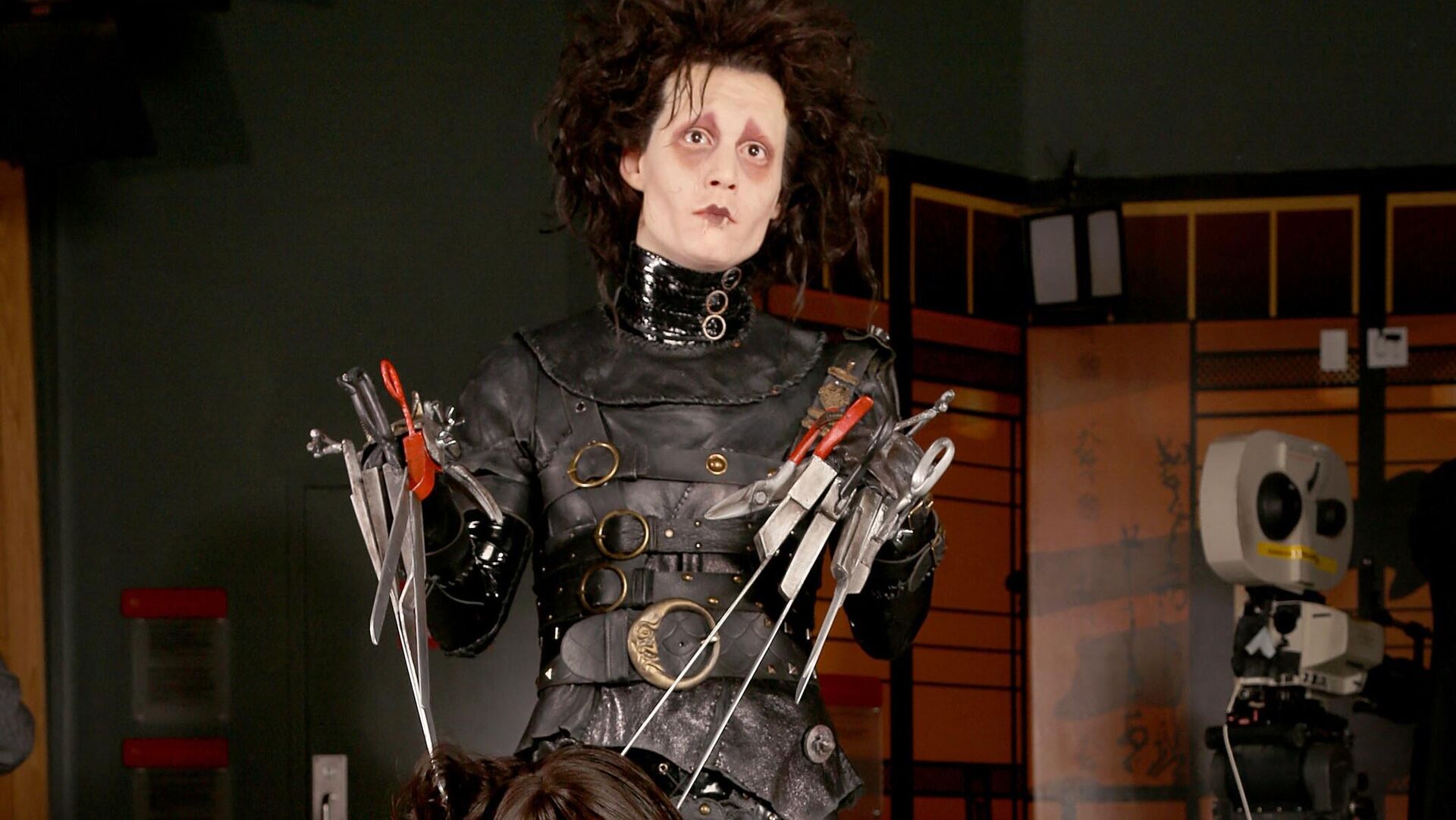https://sputnikglobe.com/20220214/cretaceous-fruit-ninja-new-dinosaur-discovery-compared-to-edward-scissorhands-1093004568.html
Cretaceous Fruit Ninja: New Dinosaur Discovery Compared to ‘Edward Scissorhands’
Cretaceous Fruit Ninja: New Dinosaur Discovery Compared to ‘Edward Scissorhands’
Sputnik International
A newly-discovered dinosaur in Catalonia was the size of a bus and had five razor-like claws akin to the character American actor Johnny Depp played in the... 14.02.2022, Sputnik International
2022-02-14T03:19+0000
2022-02-14T03:19+0000
2022-08-06T13:32+0000
dinosaurs
science & tech
https://cdn1.img.sputnikglobe.com/img/07e6/02/0e/1093011511_0:196:2113:1386_1920x0_80_0_0_a1184a92d2a56e887688a4b1e7b8a618.jpg
The discovery was published in a new paper and experts believe the “scissorhands” were useful for warding off predators and could have been used to slice open fruit, making Portellsaurus sosbaynati more of a prehistoric fruit-ninja than a blade-wielding killing machine.The dinosaur, an herbivore, was an excellent forager due in part to its huge nostrils. It stood about 10 feet tall, weighed over four tons, could rise up on its hind legs to 26 feet, and carried a long heavy tail to balance when feeding.Portellsaurus roamed Spain around 130 million years ago. The newly-announced creature sheds light on the evolution of ornithopods, according to researchers. The species started out as small, bipedal grazers, but grew in size and numbers, becoming one of the most successful species in the Cretaceous era, spreading across North America, Europe, and Asia.The authors write that the discovery, “indicates the Iberian Peninsula was home to a highly-diverse assemblage of medium-to-large bodied styracosternan hadrosauriforms during the Early Cretaceous.”
Sputnik International
feedback@sputniknews.com
+74956456601
MIA „Rosiya Segodnya“
2022
News
en_EN
Sputnik International
feedback@sputniknews.com
+74956456601
MIA „Rosiya Segodnya“
Sputnik International
feedback@sputniknews.com
+74956456601
MIA „Rosiya Segodnya“
dinosaurs, science & tech
dinosaurs, science & tech
Cretaceous Fruit Ninja: New Dinosaur Discovery Compared to ‘Edward Scissorhands’
03:19 GMT 14.02.2022 (Updated: 13:32 GMT 06.08.2022) A newly-discovered dinosaur in Catalonia was the size of a bus and had five razor-like claws akin to the character American actor Johnny Depp played in the film "Edward Scissorhands."
The discovery was
published in a new paper and experts believe the “scissorhands” were useful for warding off predators and could have been used to slice open fruit, making Portellsaurus sosbaynati more of a prehistoric fruit-ninja than a blade-wielding killing machine.
Dr. Andres Santos-Cubedo of Jaume I University, said of the dinosaur that “it was a large animal with a spiked thumb and enlarged nostrils. It ate a plant-based diet.”
The dinosaur, an herbivore, was an excellent forager due in part to its huge nostrils. It stood about 10 feet tall, weighed over four tons, could rise up on its hind legs to 26 feet, and carried a long heavy tail to balance when feeding.
Portellsaurus roamed Spain around 130 million years ago. The newly-announced creature sheds light on the evolution of ornithopods, according to researchers. The species started out as small, bipedal grazers, but grew in size and numbers, becoming one of the most successful species in the Cretaceous era, spreading across North America, Europe, and Asia.
“Portellsaurus sosbaynati is the oldest known dinosaur species in the province of Castello — about 130 million years old. It’s closely related to the Chinese dinosaur Bolong and the African dinosaur Ouranosaurus,” noted Santos-Cubedo.
The authors write that the discovery, “indicates the Iberian Peninsula was home to a highly-diverse assemblage of medium-to-large bodied styracosternan hadrosauriforms during the Early Cretaceous.”



